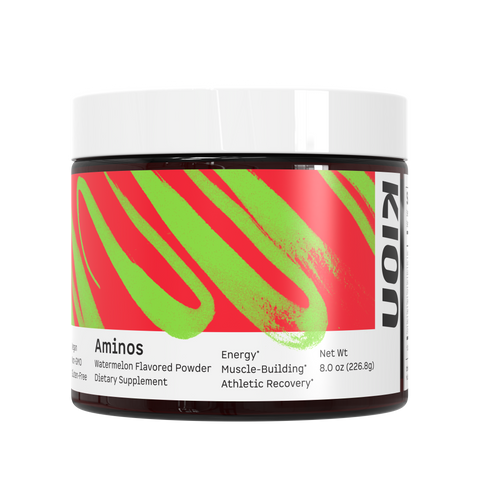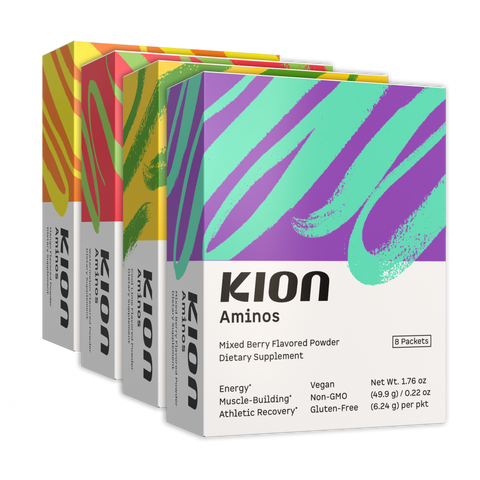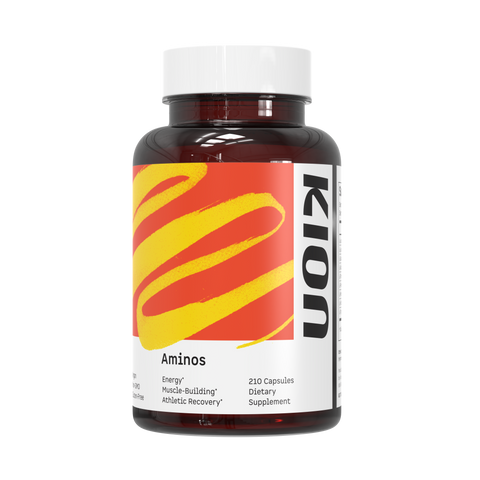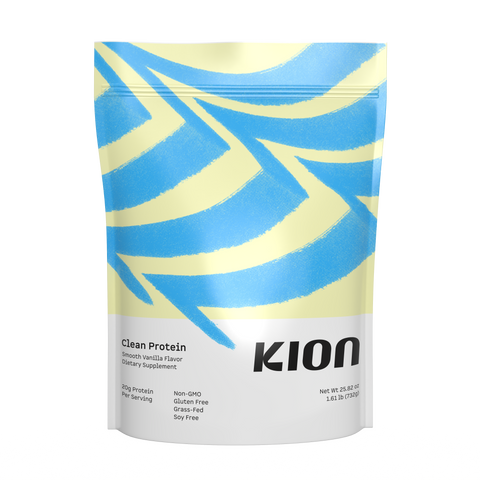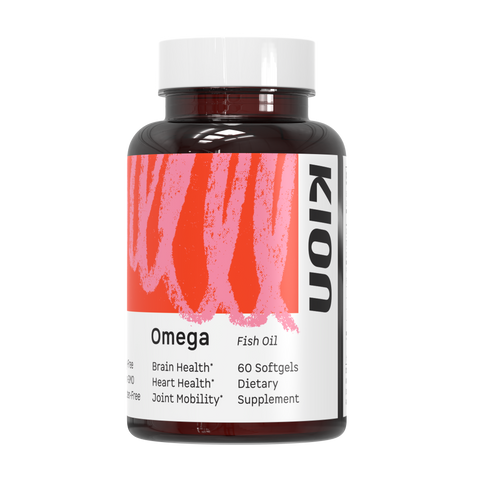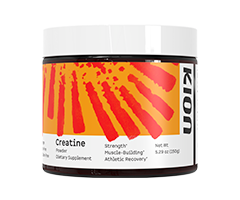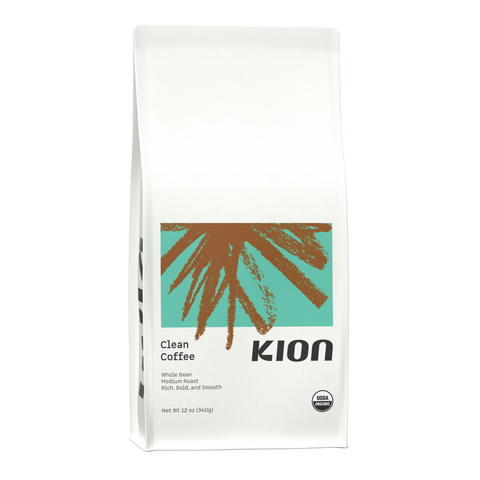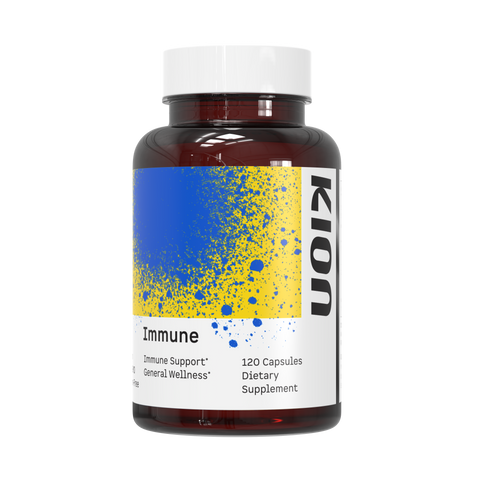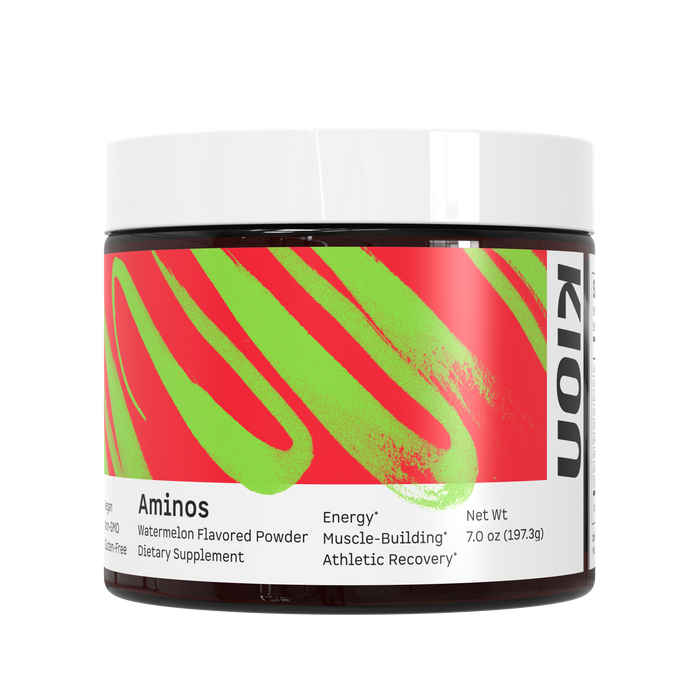Athletic recovery is a crucial (yet often overlooked) aspect of working out.
The recovery process is not something to consider lightly as it allows your body to heal and adapt, enabling you to continue to perform at your best.
However, many athletes and fitness enthusiasts don't put nearly the time and effort into recovery as they do training, or face obstacles in effectively managing recovery—both of which can lead to reduced performance and a higher risk of injury.
This article will delve into what we know about the science of recovery, and provide you with some tips and tricks to enhance athletic recovery.
Understanding Athletic Recovery
During exercise, our muscles undergo microscopic damage, which triggers an inflammatory response. (Inflammation is normal and it’s a natural and necessary process that leads to muscle repair and growth.)
Without proper athletic recovery, the balance between inflammation and muscle repair and growth can be disrupted, leading to reduced performance and an increased risk of injury.
There are many ways to support this recovery process, but typically methods are divided into either passive recovery or active recovery.
Passive recovery refers to rest and downtime, allowing the body to recuperate naturally. It includes activities such as sleep, relaxation, and periods of inactivity.
Active recovery, on the other hand, involves low-intensity exercises or activities that promote blood circulation, muscle relaxation, and the removal of metabolic waste.
The duration and methods of recovery can vary depending on the intensity and duration of the physical activity, as well as individual factors such as age, fitness level, and overall health.
By allowing the body to recover effectively, athletes can minimize the risk of overtraining, reduce the likelihood of injuries, and enhance their overall performance in subsequent training sessions or competitions.
Practical and Simple Solutions
To promote athletic recovery, incorporate these practical and simple solutions that are backed by science:
Nutrition: Consuming a well-balanced diet rich in whole foods, lean protein sources, healthy fats, and complex carbohydrates is essential. Post-workout, prioritize protein intake, and include a source of carbohydrates to replenish glycogen stores.
Hydration: Staying properly hydrated before, during, and after exercise helps maintain optimal performance and supports recovery. Aim to drink at least half of your body weight in ounces of water daily and consider adding electrolytes during intense workouts.
Sleep: Aim for 7-9 hours of quality sleep each night to allow the body time to repair and recover. Establish a consistent sleep schedule, create a calming bedtime routine, and ensure your sleep environment is conducive to rest.
Stress management: Chronic stress can hinder recovery by increasing cortisol levels, which can contribute to muscle breakdown. Incorporate stress-reducing activities such as meditation, yoga, or deep breathing exercises into your daily routine.
Active recovery: Implement active recovery techniques such as walking or light exercise, stretching, or foam rolling. Techniques may vary depending on individual abilities and specific physical activities performed.
Essential amino acid (EAA) supplementation: Incorporating a high-quality EAA supplement into your diet can help ensure you are providing your body with the necessary building blocks for recovery.
Athletic Recovery and EAAs
What else do we know about EAAs and why are they important?
EAAs are the building blocks of proteins, and they play a crucial role in athletic recovery.
There are nine EAAs—histidine, isoleucine, leucine, lysine, methionine, phenylalanine, threonine, tryptophan, and valine—and unlike non-essential amino acids, the body can’t manufacture them, making it necessary to get them from what you eat.
EAAs are absolutely necessary for muscle protein synthesis, which is the process your body uses to repairs and rebuild muscle tissue after exercise.
Research has shown that consuming EAAs can stimulate muscle protein synthesis and enhance muscle recovery.
This is important to keep in mind because in addition to supporting muscle repair, EAAs have also been linked to reduced muscle soreness and improved exercise performance.
Supplementing with EAAs has become a popular strategy for individuals motivated to optimize their recovery.
Studies have demonstrated that EAA supplementation can be especially beneficial when consumed around the time of exercise, with intake after exercise on showing the most significant impact on the recovery process.
To maximize the benefits of EAAs for athletic recovery, it's important to ensure adequate intake through a balanced diet or supplementation.
By doing so, you can support your body's natural recovery process and enhance your overall athletic performance.
Kion Aminos: The Optimal Solution for Enhancing Athletic Recovery
Kion Aminos is the optimal solution for athletes and fitness enthusiasts looking to support the recovery process.
The result of over 20 years of clinical research and countless hours peering through the most sound and current science, Kion Aminos is made of clean, natural ingredients; is sugar-free; and contains no caffeine or artificial sweeteners.
Kion Aminos comes in delicious, natural flavors like Watermelon, Mango, Mixed Berry, and Cool Lime as well as unflavored Capsules.
By incorporating Kion Aminos into your daily routine, you can give your body the necessary support to recover optimally and bounce back better, faster, and stronger.
Summary
By understanding the science behind recovery, introducing practical solutions into your routine, and using EAAs as a tool for support, you can optimize your recovery process and unlock your full potential.
Kion Aminos offers the optimal solution for athletic recovery, providing a high-quality, easily absorbable, and great-tasting source of EAAs.
By incorporating Kion Aminos into your post-workout routine, you can support muscle repair, reduce soreness, and improve your overall performance.
Enhance athletic recovery with Kion Aminos
Buy Now
Scientific Research
- American College of Sports Medicine, Sawka MN, Burke LM, et al. American College of Sports Medicine position stand. Exercise and fluid replacement. Med Sci Sports Exerc. 2007;39(2):377-390.
- Biolo G, Tipton KD, Klein S, Wolfe RR. An abundant supply of amino acids enhances the metabolic effect of exercise on muscle protein. Am J Physiol. 1997;273(1 Pt 1):E122-E129.
- Børsheim E, Tipton KD, Wolf SE, Wolfe RR. Essential amino acids and muscle protein recovery from resistance exercise. Am J Physiol Endocrinol Metab. 2002;283(4):E648-E657.
- Craven J, McCartney D, Desbrow B, et al. Effects of acute sleep loss on physical performance: a systematic and meta-analytical review. Sports Med. 2022;52(11):2669-2690.
- Gerber M, Pühse U. Review article: do exercise and fitness protect against stress-induced health complaints? A review of the literature. Scand J Public Health. 2009;37(8):801-819.
- Jackman SR, Witard OC, Philp A, Wallis GA, Baar K, Tipton KD. Branched-chain amino acid ingestion stimulates muscle myofibrillar protein synthesis following resistance exercise in humans. Front Physiol. 2017;8:390.
- Lombardi G, Ziemann E, Banfi G. Whole-body cryotherapy in athletes: from therapy to stimulation. an updated review of the literature. Front Physiol. 2017;8:258.
- Moore E, Fuller JT, Buckley JD, et al. Impact of cold-water immersion compared with passive recovery following a single bout of strenuous exercise on athletic performance in physically active participants: a systematic review with meta-analysis and meta-regression. Sports Med. 2022;52(7):1667-1688.
- Pasiakos SM, Lieberman HR, McLellan TM. Effects of protein supplements on muscle damage, soreness and recovery of muscle function and physical performance: a systematic review. Sports Med. 2014;44(5):655-670.
- Peake JM, Neubauer O, Della Gatta PA, Nosaka K. Muscle damage and inflammation during recovery from exercise. J Appl Physiol (1985). 2017;122(3):559-570.
- PubChem. Histidine. https://pubchem.ncbi.nlm.nih.gov/compound/Histidine. Accessed March 23, 2023.
- PubChem. Isoleucine. https://pubchem.ncbi.nlm.nih.gov/compound/l-Isoleucine. Accessed March 23, 2023.
- PubChem. Leucine. https://pubchem.ncbi.nlm.nih.gov/compound/Leucine. Accessed March 23, 2023.
- PubChem. Lysine. https://pubchem.ncbi.nlm.nih.gov/compound/L-lysine. Accessed March 23, 2023.
- PubChem. Methionine. https://pubchem.ncbi.nlm.nih.gov/compound/L-methionine. Accessed March 23, 2023.
- PubChem. Phenylalanine. https://pubchem.ncbi.nlm.nih.gov/compound/L-phenylalanine. Accessed March 23, 2023.
- PubChem. Threonine. https://pubchem.ncbi.nlm.nih.gov/compound/L-threonine. Accessed March 23, 2023.
- PubChem. Tryptophan. https://pubchem.ncbi.nlm.nih.gov/compound/L-tryptophan. Accessed March 23, 2023.
- PubChem. Valine. https://pubchem.ncbi.nlm.nih.gov/compound/Valine. Accessed March 23, 2023.
- Thomas DT, Erdman KA, Burke LM. American College of Sports Medicine Joint Position Statement. Nutrition and Athletic Performance. Med Sci Sports Exerc. 2016;48(3):543-568.
- Tidball JG. Mechanisms of muscle injury, repair, and regeneration. Compr Physiol. 2011;1(4):2029-2062.
- Tipton KD, Elliott TA, Cree MG, Wolf SE, Sanford AP, Wolfe RR. Ingestion of casein and whey proteins result in muscle anabolism after resistance exercise. Med Sci Sports Exerc. 2004;36(12):2073-2081.
- Tipton KD, Wolfe RR. Exercise, protein metabolism, and muscle growth. Int J Sport Nutr Exerc Metab. 2001;11(1):109-132.
- Van Dusseldorp TA, Escobar KA, Johnson KE, et al. Effect of branched-chain amino acid supplementation on recovery following acute eccentric exercise. Nutrients. 2018;10(10):1389.
- Waskiw-Ford M, Hannaian S, Duncan J, Kato H, Abou Sawan S, Locke M, Kumbhare D, Moore D. leucine-enriched essential amino acids improve recovery from post-exercise muscle damage independent of increases in integrated myofibrillar protein synthesis in young men. Nutrients. 2020;12(4):1061.
- Watson AM. Sleep and athletic performance. Curr Sports Med Rep. 2017;16(6):413-418.
- Wolfe RR. Branched-chain amino acids and muscle protein synthesis in humans: myth or reality?. J Int Soc Sports Nutr. 2017;14:30.
* These statements have not been evaluated by the Food and Drug Administration. This product is not intended to diagnose, treat, cure, or prevent any disease.
© 2022 Kion. All rights reserved.



